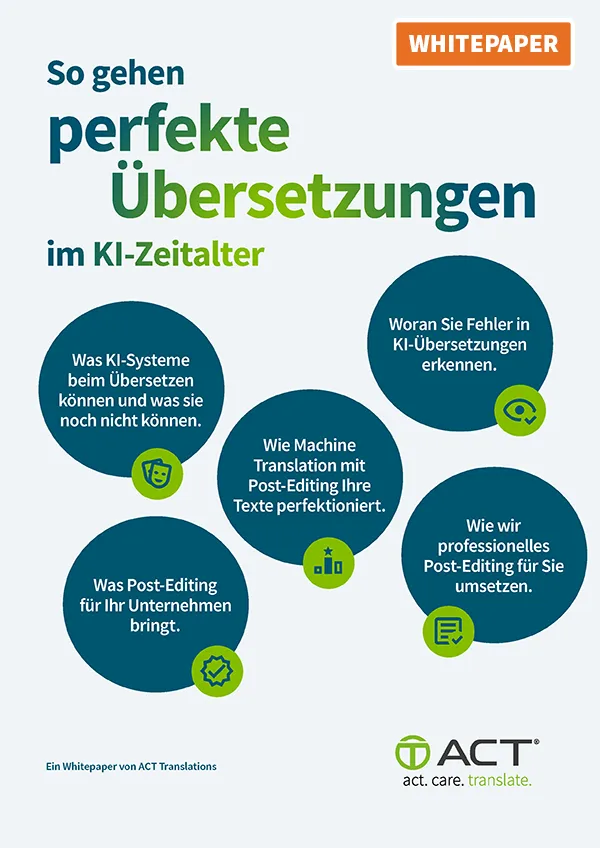It’s not just contracts! Every company is constantly producing relevant legal documents. Whenever international partners are involved, the documents must often be multilingual. The translation of legal texts is particularly tricky for several reasons. They can only be reliably translated by professionals.
The best-known example is roughly 3,800 years old. When a French expedition to Persia found the stele containing the Codex Hammurapi in the winter of 1901, it stumbled upon one of the oldest legal texts known to mankind. However, it also triggered a debate about correct legal translations that continues to this day. The Babylonian collection of legal texts has been, and continues to be, retranslated and reinterpreted, and each version has its critics. Even the question of the correct consonant in the ruler’s name is still a matter of debate among experts today. The laws that Hammurapi I gave to the Babylonians are no longer in use today. However, their reception throughout history is a good example of the importance of translating legal texts.
Contracts and other legal texts present translators with specific challenges that go far beyond the language skills, which makes the involvement of professional service providers indispensable.
Challenge #1: Legal translations also carry legal repercussions
Legal texts must be binding and extremely reliable in terms of interpretation. The latter is already a major challenge in the original versions, so naturally it is even greater when it comes to translations of contracts or similar documents. This puts a lot of pressure on the translator to produce a language version that is airtight and does not lead to legal disputes later on. Even more so than with other types of text, the question of liability also plays an important role here. For principals, this means that choosing the right translation agency has a direct impact on legal certainty.
Challenge #2: Contract translations also cross system boundaries
Different countries rely on different legal systems and legal traditions. This means that sometimes there is no equivalent for certain facts or even individual terms in the target language. A good example here is the German term “Treu und Glauben” (good faith), which has no direct equivalent in many legal systems and therefore needs to be paraphrased correspondingly so that it conveys the same legal definition in the target language. Translators therefore need excellent language skills as well as profound experience with the legal systems of the respective countries.
Challenge #3: Contract language and grammar follow their own rules
If you are not a lawyer yourself, you are probably familiar with the fact that legal texts use peculiar terminology that sometimes differs significantly from everyday language. In addition to unique legal terms, some common everyday terms take on completely different meanings. Even grammar often deviates from the standard rules. For example, nested sentences are usually frowned upon in standard prose. However, they are commonplace in German legal documents, because the clarity of the content is more important than linguistically pleasant or easy-to-read formulation. By contrast, concise wording is preferred in English legal texts, which is why the nested sentences often need to be broken down into shorter segments to properly translate a contract into English.
Challenge #4: There are also cultural pitfalls
Every legal system is also a reflection of its cultural background. The translator must have a good grasp of the country’s customs to reliably provide a professional contract translation.
A classic example of this challenge is gendering, which is common in German. Gender distinctions or complex gender-neutral formulations are unusual in languages such as Arabic and can therefore lead to problems if the context is unfamiliar. Vice versa, translations from Arabic into German must contain these formulations to avoid appearing discriminatory. It is also interesting to note that Anglo-American law does not differentiate between owner, holder, and proprietor. Consequently, for translations from English into German, it must be clarified how the term “owner” is supposed to be used.
Even the tonality can impact the other contracting party. In German contracts, obligations, clauses, or even threats of punishment are formulated very succinctly and titled for what they are. In Asian cultures such as Japanese or Chinese, it is customary to use more “diplomatic” wording. Combining politeness with legal accuracy can thus be a tricky task for translators.
Make sure that contracts are translated by the right people: How to find the best translation agency for your needs
Companies that need legal translations should plan their service provider selection meticulously. There are criteria that make this choice easier.
Do the translators also have legal expertise?
Anyone who attempts to translate legal documents must have two prerequisites. The translator must be a native speaker and understand the intercultural intricacies, but also possess in-depth legal expertise. Only service providers who can offer this dual qualification should work in this area. It is advisable to ask for appropriate references or obtain recommendations from other companies that have already had good experiences. Requesting sample translations can provide additional clarity.
Can the service provider provide certifications and references?
Liability issues can arise in connection with legal translations. It is therefore important for companies to protect themselves in this regard. Translation partners should definitely be certified according to DIN EN ISO 17100, preferably also according to ISO 9001. Certified translations, i.e. translations that are designated to be submitted to authorities or courts, are particularly sensitive. “Normal” service providers are not authorized to carry out these types of certifications, because they must employ translators who are sworn translators. Companies should therefore also make sure that the translation agency has appropriately authorized employees.
What technologies does the translation agency use?
The use of technology has become an integral part of modern translation work. When it comes to legal translations, however, one thing is certain: Machine translation is an absolute no-go here. With or without post-editing, no AI is even close to being able to meet the specific requirements in this area. However, there are other technologies that can be extremely helpful here.
Translation Memory: Translation memory systems are part of the CAT tools used by professional service providers. CAT stands for “Computer Aided Translation” and covers all forms of machine support for professional legal translators. A translation memory is like an automated glossary: Once the professional translation of a term or even an entire phrase is confirmed to be correct in the original document, it is saved in the system. If the word or phrase appears again, the system automatically suggests the correct equivalent in the target language. This saves time for the service provider and therefore also reduces costs. For legal texts in particular, each individual suggestion from the translation memory is always verified and revised as needed before it can be adopted.
Terminology databases: Many companies keep their own glossaries of legally relevant terms that appear repeatedly in their documents. Good translation service providers offer to integrate this glossary into their current task. If necessary, they expand it together with the client whenever new terms appear. When faced with potentially ambiguous terms, each individual case is always verified manually.




